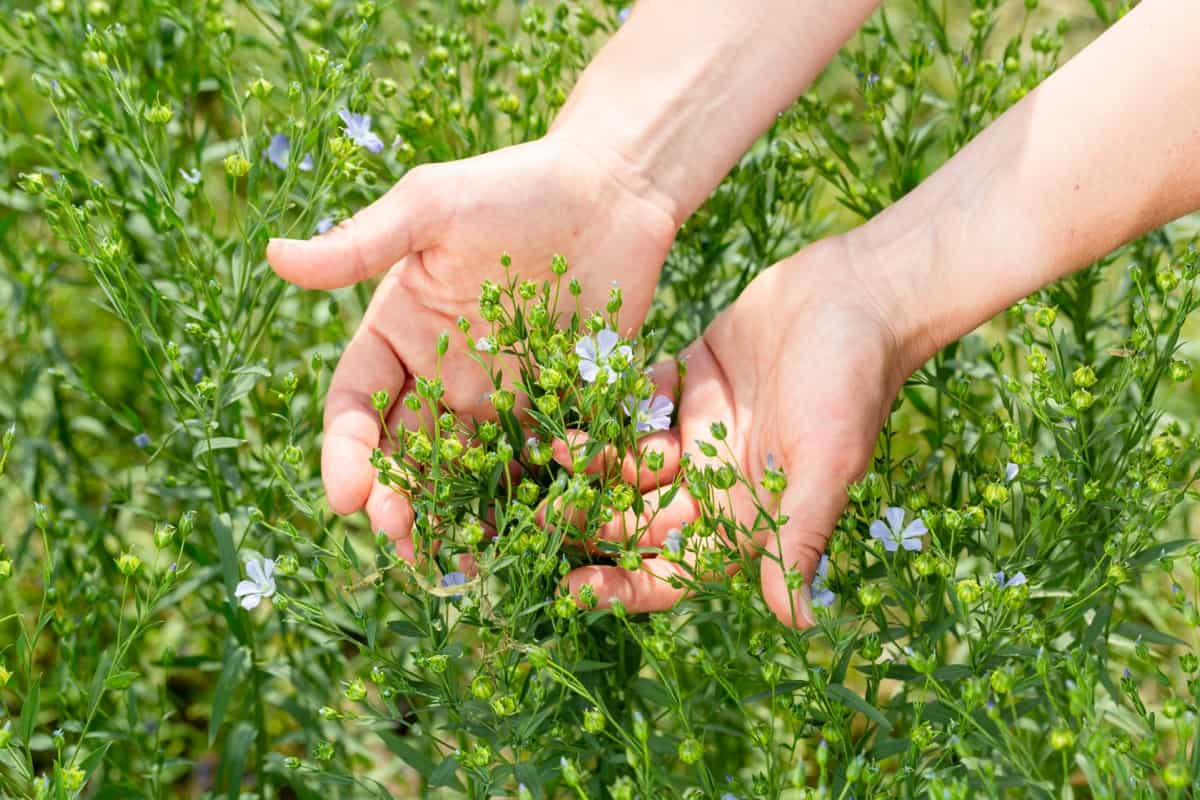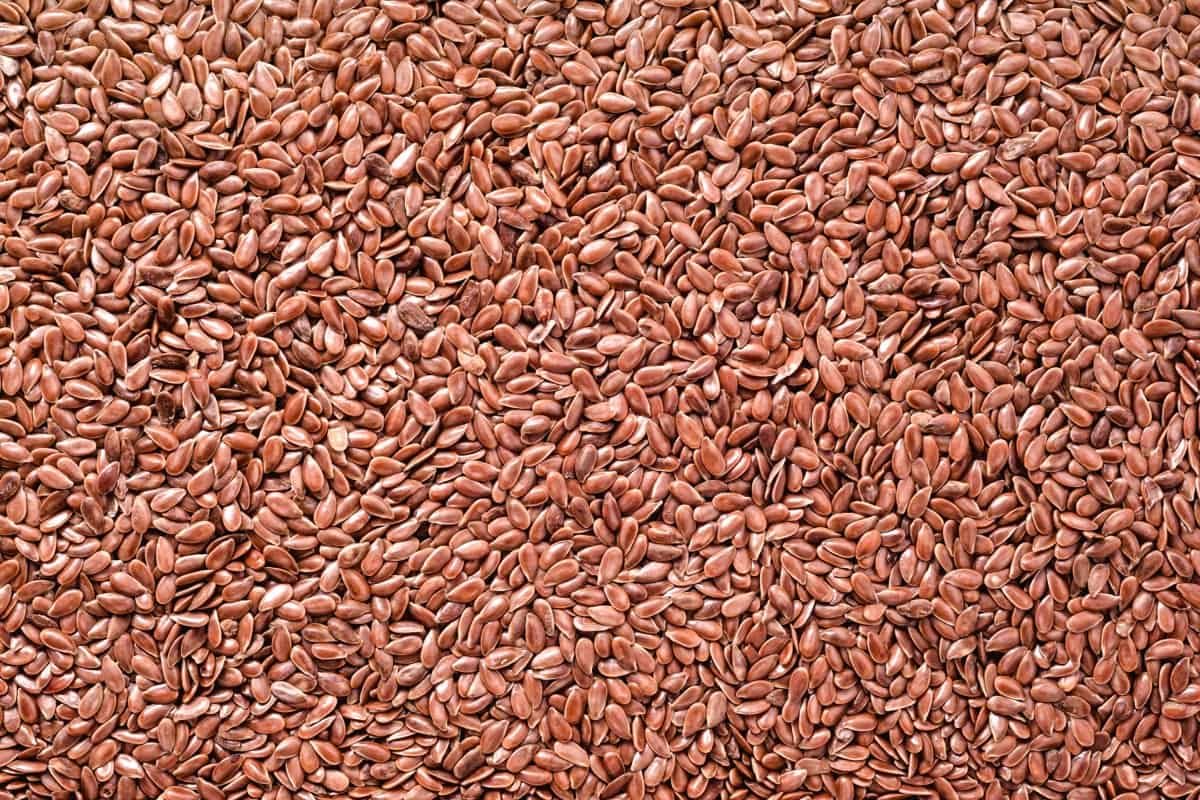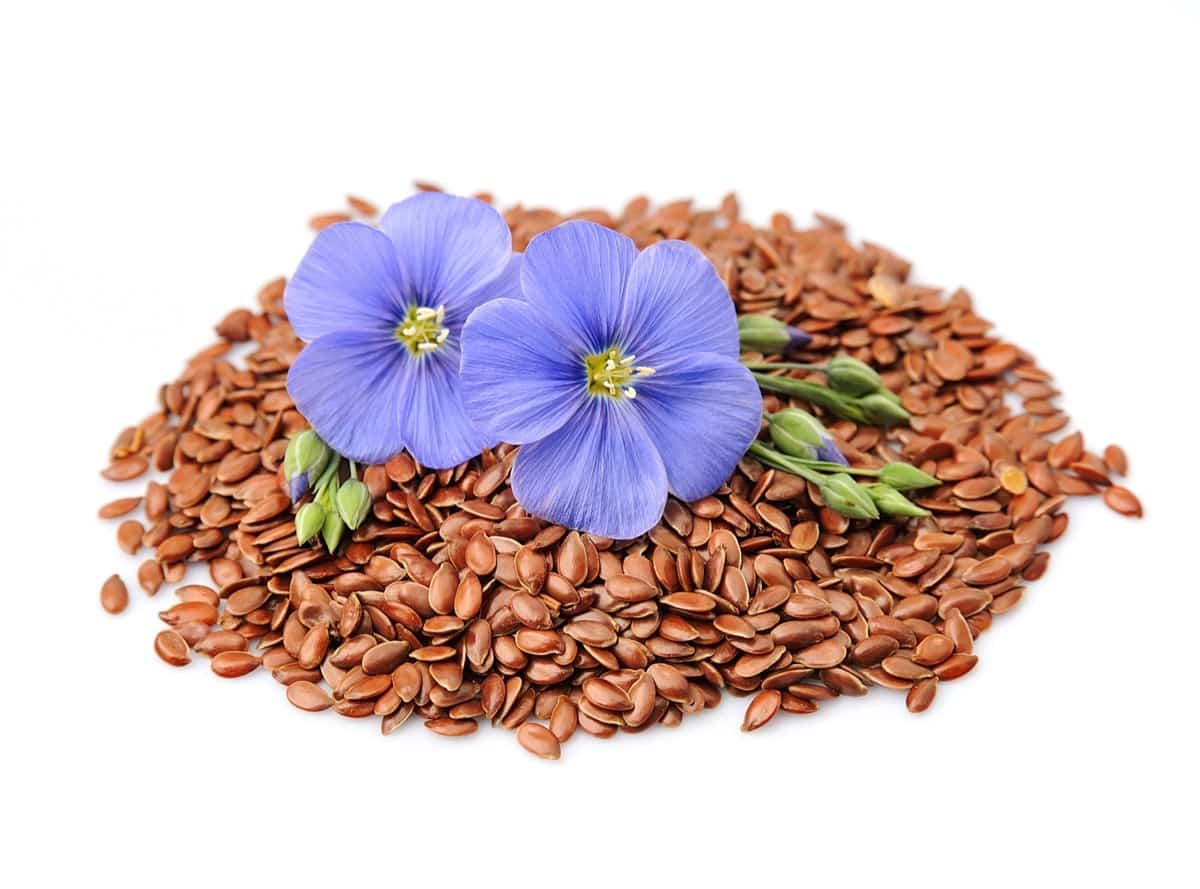Flaxseed, or common flax or linseed, is a remarkable flowering plant that belongs to the Linaceae family. This versatile crop has become a staple in various cuisines and industries worldwide. By choosing to grow Flaxseed organically, you ensure that your crop remains free from synthetic additives and promotes a healthier environment.

How to Grow Organic Flaxseed
Choosing the Right Flaxseed Variety for Organic Cultivation
Look for varieties specifically bred or selected for their ability to grow without synthetic pesticides or fertilizers. These varieties are often more disease-resistant and better adapted to natural pest control methods. Another important consideration is the climate and growing conditions of your region.
Flax grows best in temperate climates with well-drained soils. Some varieties may be better suited for colder climates, while others can tolerate warmer temperatures. A few known varieties of Flaxseed are K-2, T-397, No. 55, NP (RR) 9, LC 185, S-4, B-67, M-10, Jawahar-17, Jawahar-7 (R-7), Mayurbhanj, Hira, Mukta, Neelum, etc.
Preparing the Soil for Organic Flaxseed Cultivation
- Flax seeds thrive in well-drained soils with a pH level ranging from 6 to 7.5.
- To ensure optimal growth, test the soil’s pH using a testing kit. This will help you determine if any amendments are needed to achieve the ideal range for Flaxseed cultivation.
Organic Flaxseed Planting Techniques
- To start, it is important to choose high-quality varieties that are well-suited for organic Flaxseed farming. These varieties should be able to thrive in your specific climate and soil conditions.
- Once you have selected the right variety, it’s time to prepare the soil. It is essential to ensure proper drainage as waterlogged soil can lead to the rotting of the seeds or plants.
- When sowing Flaxseeds, it is recommended to use a line sowing method with uniform distribution. The seed rate for Flaxseed ranges from 30-40 seeds per kg/hectare. Ensure each seed is placed about 4-5 cm below the soil surface.
- Spacing between rows and plants also plays a vital role in ensuring healthy growth. Maintain a spacing of 20-30 cm between rows and around 10 cm between individual plants within each row.
- To control weeds organically, consider using mulch or cover crops like clover or buckwheat, which can suppress weed growth while adding nutrients to the soil.
- Watering needs for Flaxseeds vary depending on weather conditions and growth stage but aim for consistent moisture without overwatering, which can lead to root rot.
- Fertilizing organic Flaxseed involves using natural amendments like compost or well-decomposed manure before planting. This helps provide necessary nutrients while maintaining soil health.
Information about Growing Flaxseed
| Plant Name | Flax |
| Soil Type | Well-drained sandy loam |
| Botanical Name | Linum usitatissimum |
| Common Names | Flax plant, flax, common flax, linseed |
| Sun Exposure | Full sun |
| Soil pH | 6-7.5 |
| Bloom Time | Mid-spring through summer |
| Soil Type | Rich, sandy or loamy, well-drained |
| Plant Type | Annual herb |
| Harvesting Time | 100 days after planting seeds |
Watering Requirements for Organic Flaxseed
- Flax plants require adequate moisture for their growth and development, especially during germination and flowering.
- To ensure optimal watering, it is important to maintain a balance. Flax plants prefer moist but not overly wet soil. The best way to determine when to water is by checking the soil moisture levels.
- It is advisable to use drip irrigation or soaker hoses for watering Flaxseed crops as they deliver water directly at the base of each plant without wetting the foliage excessively. This reduces disease incidence while promoting efficient water usage.
In case you missed it: How to Grow Organic Chia Seeds: Cultivation Practices

Fertilizing Organic Flaxseed
- Compost provides a rich source of nutrients, improves soil structure, and promotes beneficial microbial activity.
- Another natural fertilizer to consider is manure. However, be cautious about using fresh manure as it may contain harmful pathogens. Instead, opt for well-aged manure that has been properly composted to ensure safety and nutrient availability.
- If you prefer commercial organic fertilizers, look for products specifically formulated for Flaxseed or general vegetable crops. These fertilizers are usually labeled with N-P-K ratios (nitrogen, phosphorus, potassium), indicating their nutrient content.
Organic Weed Control Methods for Flaxseed
- Weed control is essential to ensure the health and productivity of your crop. Weeds can compete with flax plants for water, nutrients, and sunlight, reducing yields.
- Hand weeding involves manually removing weeds from the flax field by pulling them out by their roots. While this may be time-consuming and labor-intensive, it allows for precisely removing weeds without chemicals.
- By spreading a layer of organic materials around the base of flax plants, you can suppress weed growth and conserve soil moisture at the same time.
- Crop rotation is also beneficial in controlling weeds organically. By alternating different crops in your fields yearly, you disrupt weed life cycles and reduce their populations over time. Regular cultivation using a hoe or shallow tillage tools can help disrupt emerging weeds before they become established in your flax field.
Organic Pest Management Strategies for Flaxseed
Crop rotation: One of the simplest and most effective ways to manage pests organically is through crop rotation. By alternating Flaxseed with different crops each year, you naturally disrupt the pest life cycle and reduce their population.
Beneficial insects: Encouraging beneficial insects like ladybugs, lacewings, and parasitic wasps can help control common pests such as aphids and caterpillars. You can attract these helpful creatures by planting companion plants like dill, yarrow, and marigold near your Flaxseed crops.
Physical barriers: Erecting physical barriers like floating row covers or netting around your flax plants can prevent insect pests from reaching them in the first place. This method works particularly well against flying insects like moths and butterflies.
Organic sprays: If necessary, you can make organic sprays using ingredients like neem oil or garlic extract to deter pests from infesting your Flaxseed crops. These natural solutions are gentle on the environment while effectively repelling many common garden pests.
Harvesting Organic Flaxseed
Harvesting organic Flaxseed is a crucial step in the cultivation process. Generally, farmers wait until approximately 90 percent of the seedheads have turned tan or gold before harvesting. This indicates that the Flax seeds are mature and ready for collection. Timing is important when it comes to harvesting Flaxseed. It typically takes around 100 days after planting seeds to reach maturity. Once harvested, handling the Flaxseed with care is important to prevent damage or contamination. Proper drying techniques should remove excess moisture and maintain its quality.
Drying and Storing Organic Flaxseed
- Once you have harvested your crop, it’s important to ensure the seeds are properly dried before storage. This helps prevent mold or moisture damage, ensuring the longevity of your Flaxseed.
- To begin, spread out the harvested Flaxseed in a thin layer on a clean surface. It’s important to choose a well-ventilated area with good air circulation.
- Allow the Flaxseed to dry naturally for about 2-3 weeks. During this time, turn over the seeds regularly to promote even drying. If necessary, you can also use fans or dehumidifiers to speed up the process.
- Once the Flaxseed is fully dried, it should feel hard and brittle. You can test its readiness by crushing a few seeds between your fingers – they should break easily without any moisture remaining.
- Next, transfer the dried Flaxseed into clean and dry containers such as glass jars or sealed bags. Make sure these containers are airtight to prevent moisture from seeping in.
- Store your organic Flaxseed in a cool, dark place away from direct sunlight. Properly stored Flaxseed can last up to one year while retaining its nutritional value.
In case you missed it: From Seed to Harvest: How to Grow and Care for Brandywine Tomatoes

Certification Requirements for Organic Flaxseed
Before selling your organic Flaxseed, it’s essential to ensure that you meet the certification requirements. You must obtain certification from a recognized organic certifying agency to label your Flaxseed as organic. This certification ensures that your Flaxseed has been grown and processed based on strict organic standards.
The process of obtaining certification involves submitting an application, providing detailed documentation about your cultivation practices, and undergoing inspections by the certifying agency. To maintain your organic certification over time, you’ll need to keep detailed records of all inputs used on your crops and implement ongoing monitoring to prevent contamination with non-organic substances.
Conclusion
Flaxseed, or linseed, is a versatile crop that can be grown organically with proper cultivation practices. Flax thrives best in temperate climates, receiving adequate rainfall or irrigation without excessive heat or cold temperatures. Cultivating organic Flaxseed allows you to contribute to the demand for environmentally friendly products.
- Feed Your Flock for Less: Top 10 Tips to Save on Chicken Feed
- Ultimate Guide to Ossabaw Island Hog: Breeding, Raising, Diet, and Care
- Hatching Answers: The Top 10 Reasons Your Chickens Aren’t Laying Eggs
- Eggs and Economics: Breaking Down the Cost of Raising Backyard Chickens
- Defend Your Greens: Proven Methods to Keep Iguanas Out of Your Garden
- Ultimate Guide to Cinnamon Queen Chicken: A Comprehensive Guide for Beginners
- Ultimate Guide to California Tan Chicken: Breeding, Raising, Diet, Egg-Production and Care
- Ultimate Guide to Marsh Daisy Chicken: Breeding, Raising, Diet, and Care
- 10 Types of Chicken Farming Businesses You Can Start for Profits